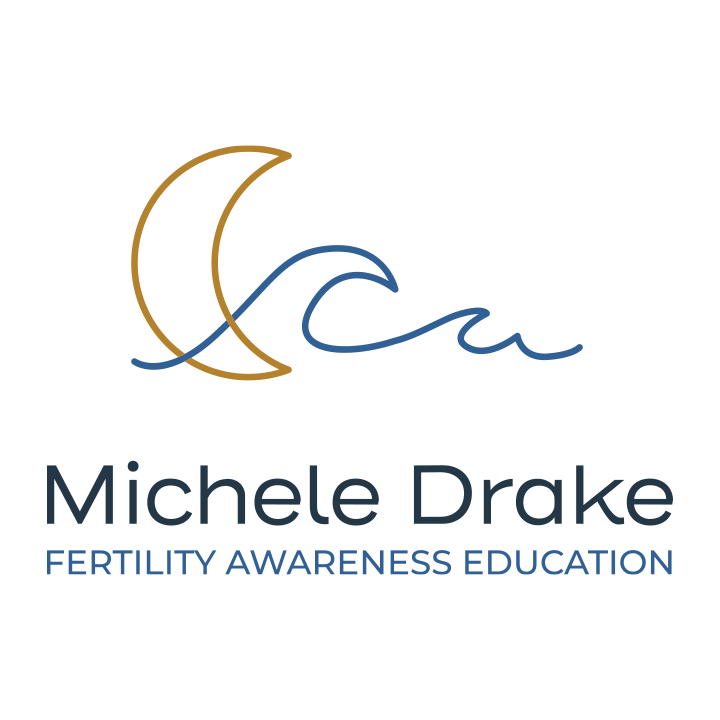Are your personal care products harming your hormones?
Painful periods? Acne? Extreme mood swings and PMS? Sub-fertility? Unable to lose weight? You might be suffering from hormonal imbalance, and your cosmetics and home cleaning supplies could be to blame.
Hormonal imbalance is one of the most common, but least treated issues affecting those of us with menstrual cycles. Part of the reason hormonal imbalance is so under-treated is because it is easier for doctors to prescribe hormonal birth control rather than diagnose and treat the imbalance. Hormonal birth control (the pill, patch, ring, shot, implant, and most IUDs) works by turning off the body’s normal hormone production and replacing it with synthetic hormones. That means birth control doesn’t actually fix or treat hormonal imbalance- but rather temporarily covers it up.
“… birth control doesn’t actually fix or treat hormonal imbalance- but rather temporarily covers it up.”
If you’re experiencing symptoms of hormonal imbalance, there are three options for an accurate diagnosis. Lab testing is available through saliva and blood testing. Hormone testing through saliva is preferred because it measures two separate phases of your cycle. You can do this with an at-home kit, but they can be costly (usually $200-300). If you have a supportive doctor and medical insurance, blood testing may be accessible to you. But there is a method of assessment for hormonal imbalance which is free and accessible to everyone: the Fertility Awareness Method. If you chart your cycles, you can learn how to identify whether your estrogen or progesterone is too high or low by paying attention to your fertility signs. The method is easy to learn when you work with an instructor. You can read more about the Fertility Awareness Method here, or contact me for a free consultation.
Once you’ve assessed your hormonal level, there are two main components for treatment: helping your body make hormones, and managing your toxic load. You can help your body create hormones through diet. Since hormones in their most primary forms are cholesterol, it’s crucial that you give your body healthy fats.
For most people, hormonal imbalance occurs because of an excess of estrogen. Managing your toxic load has two components: supporting digestion (to get rid of extra hormones) and preventing taking in extra hormones. Regular digestion removes excess hormones so that they are not reabsorbed into our systems. You can support digestion by adding cruciferous vegetables and fiber into your diet. Another way to combat hormonal imbalance is to reduce your exposure to endocrine disruptors.
Endocrine disruptors are chemicals in our environment known to negatively affect our hormones. They are hidden in the plastics, receipt paper, cleaning products, and personal care products we use each day. They can be tough to spot at first, but once you make a habit of reading ingredients, they are easy to avoid. These chemicals are commonly found in makeup, deodorants, shampoos, nail polish, dish soap, kitchen sprays, air freshener, and tampons and pads (you can read more about period care products here).
The Environmental Working Group (EWG) has compiled a list of the “dirty dozen” worst and most common endocrine disruptors. They are: BPA, dioxins, atrazine, phthalates, perchlorate, fire retardants, lead, arsenic, mercury, PFCs, organophosphate pesticides, and glycol ethers. It’s important to check ingredient labels carefully.
It’s easy to get overwhelmed when you’re trying to make healthy lifestyle changes. One tip to make it easier: prioritize your product changes. Sometimes, the hormone healthy option is more expensive or doesn’t share the same qualities as the conventional choice. I chose to prioritize lip balms and period care products since those products are in contact with the most absorbative parts of my body.
You don’t have to change everything at once. Contrary to what instagram might lead you to believe, no one is perfect. Just make one or two healthy swaps for now, and as you replace your consumables, try to make a better, hormone-healthy choice each time.
Sources:
A. C. Gore, V. A. Chappell, S. E. Fenton, J. A. Flaws, A. Nadal, G. S. Prins, J. Toppari, R. T. Zoeller, EDC-2: The Endocrine Society's Second Scientific Statement on Endocrine-Disrupting Chemicals, Endocrine Reviews, Volume 36, Issue 6, 1 December 2015, Pages E1–E150, https://doi.org/10.1210/er.2015-1010
American College of Obstetricians and Gynecologists Committee on Health Care for Underserved Women and the American Society for Reproductive Medicine Practice Committee. "Exposure to Toxic Environmental Agents." American College of Obstetricians and Gynecologists. N.p., Oct. 2013. Web. 22 June 2019. <acog.org>.
Konkel, Lindsey. "Women's Risk of Reproductive Disease Linked to Environmental Estrogens." Scientific American. N.p., 31 July 2012. Web. 23 June 2019.



